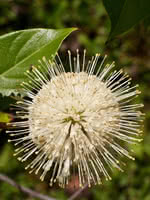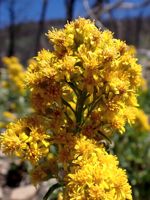Mon-Fri 9am - 5pm Mountain time
Buttonbush vs Missouri Goldenrod
Cephalanthus occidentalis
Solidago missouriensis
CUSTOM GROW
NOT AVAILABLE THIS SEASON - MIGHT RETURN
Buttonbush is a moisture loving shrub that provides year round interest.
It has round, fragrant flowers resembling small buttons or pincushions. The flowers transform into small reddish-brown fruit that persists into winter while the leaves take on shades of red in fall.
Providing essential food to bees, butterflies, and other insects, this shrub is versatile. Try it in your next shrub border.
Missouri Goldenrod is a native perennial wildflower known for its brilliant golden yellow flowers that bloom from late summer to early fall. The flower heads contain hundreds of tiny blossoms that attract a wide variety of pollinators, including bees, butterflies, and other beneficial insects. Fully opened flowers can also be used to make tea. As the season progresses, the flowers give way to fluffy seed heads, providing food for birds.
It can spread readily through its roots and self-seeding, this make Missouri Goldenrod well suited for hard-to-grow areas. This vigorous growth habit makes it an excellent choice for large planting areas, wildflower gardens, naturalized projects, prairie restoration, and erosion control.

